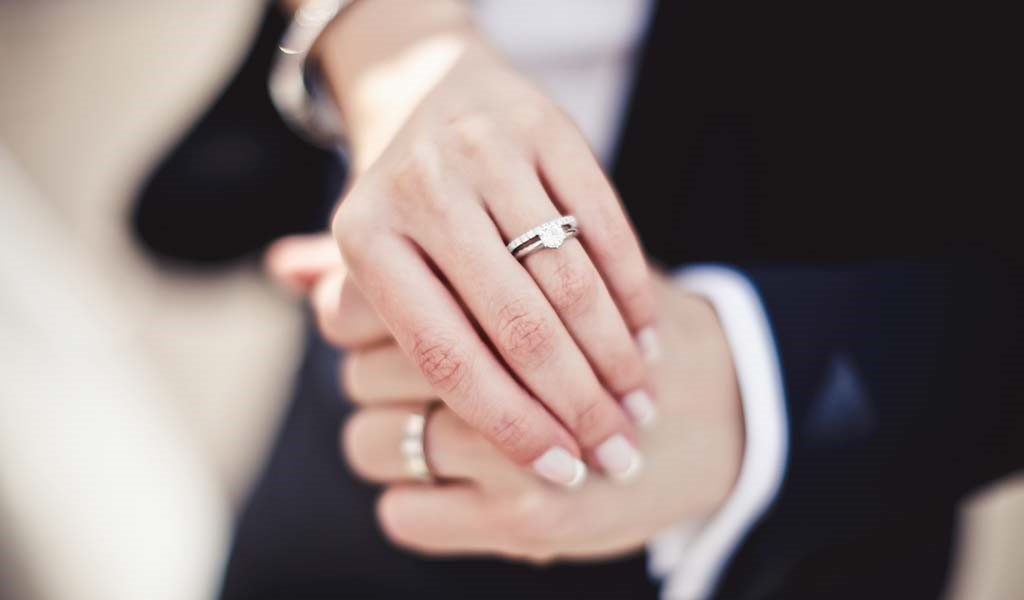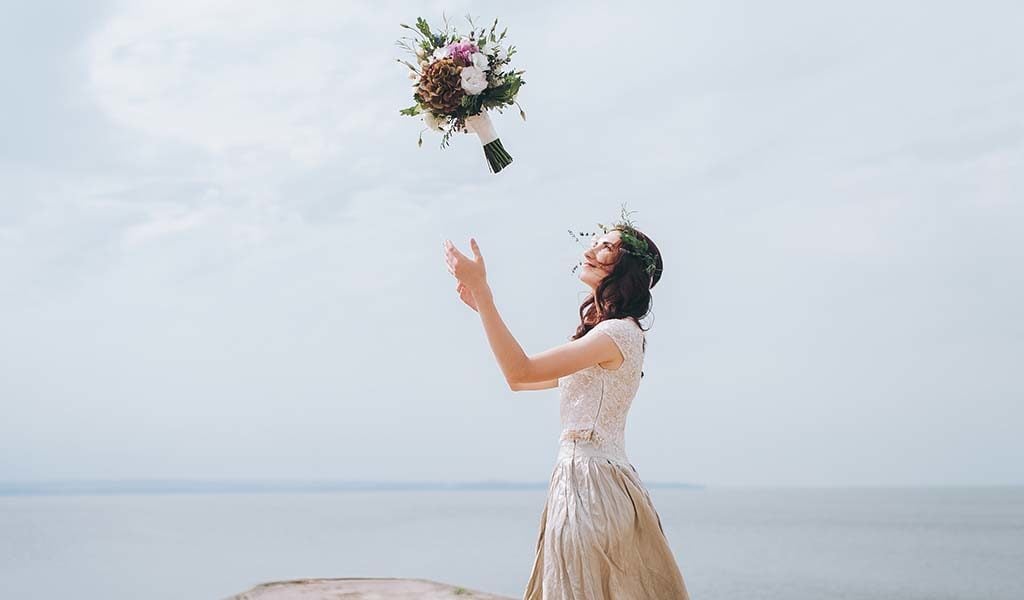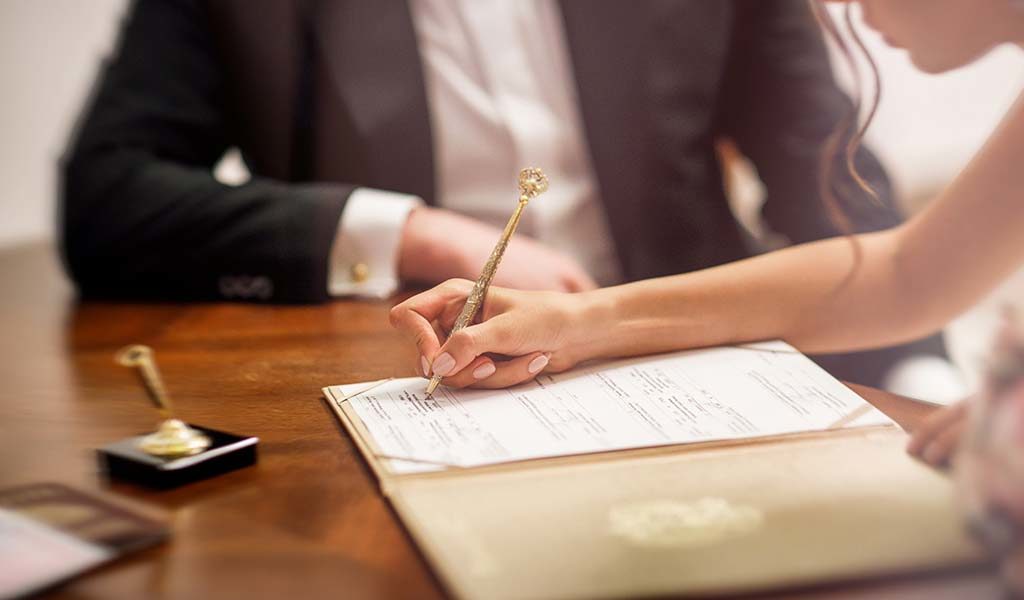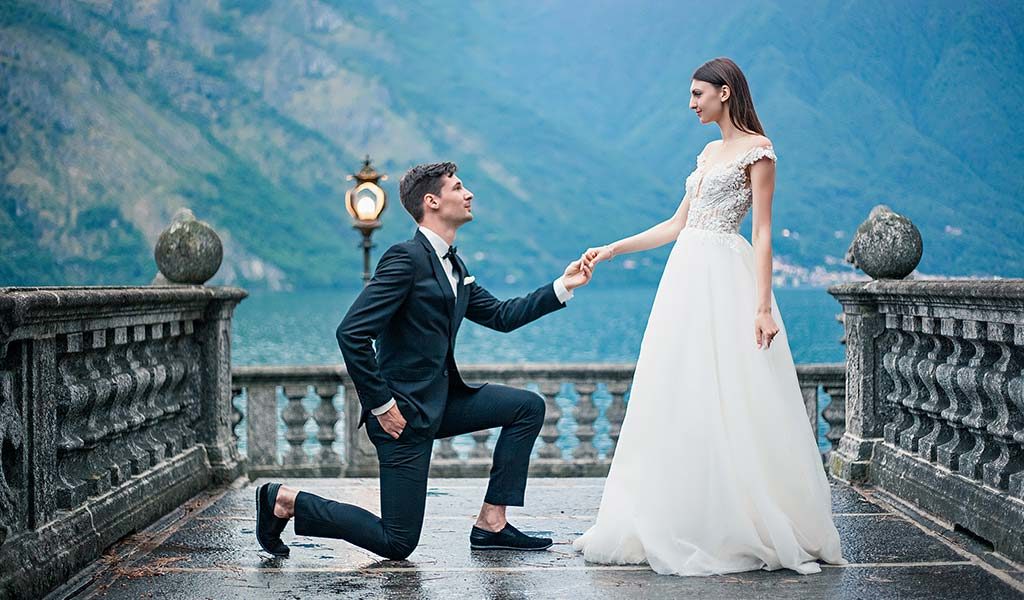All over the world, wedding traditions are special and unique with cultural significance. And to celebrate a wedding in a classical sense is a beautiful way in which to share and imbibe love. But do you know why certain wedding traditions are still used today? And do you know where they come from? Here, you'll find out why you often see the same wedding traditions at nearly every wedding you attend.
1. Why Does a Man Get Down on One Knee to Propose?
While it can't be pinpointed exactly, during the middle ages men used to kneel down in front of the woman that they fancied. And in some religions, it's seen as a sign of respect and obedience.
Today however, this cute tradition still sweeps countries all over the world. It's not just a lovely way in which to pop the question, but can also be seen as a symbol of surrendering love and adoration. And as for women who've been waiting patiently to hear those four magical words, it's a defining moment that causes their hearts to race, and faces to light up.
But let's put the happy couple aside for a second and think about the crowd. Have you ever witnessed someone being proposed to? Or perhaps you've watched adorable proposal videos on YouTube whilst turned your head to the side and letting out a gentle, "aww!"? The whole affair is a moment of joy for everyone, and has become a true symbol of getting engaged.
2. Where Does the Term "Hen Party" and "Stag Party" Come from?
A fun wedding tradition for all involved, getting together with girl or guy friends in order to celebrate upcoming nuptials is always a good time (especially if they involve a few cheeky props and games). But why are these parties considered a wedding tradition, and where do they come from?
For women, the word "hen" means female bird, making it a fitting choice for this kind of gathering. The word dates back to the 1800's and at that time, referred to a simple gathering of women for any occasion.
Then, in the 1960's, hen parties for soon-to-be-married ladies grew in popularity. It was also around this time the newspaper, The Times, wrote an article talking about male strippers at these kinds of events and how inappropriate the whole idea was.
For men, the word "stag" has many different meanings - all pertaining to males. It refers to being the leader of the pack, virility, male vigour, strength, and vitality.
The term also came about in the 1800's, and the first ever stag party was held in Ancient Greece. It is said to hold cheeky undertones due to Cernunnos, the God of the Celts and Pagans, who was known to enjoy wild animal hunts that symbolised wealth and fertility.
3. Why Don't Couples See Each Other Before the Wedding Ceremony?
This wedding tradition is an interesting one, and dates back to when arranged marriages were "a thing". Brides and grooms were not allowed to see their life partner beforehand as it would pose a risk of one or both of them calling it off.
As time progressed, this wedding tradition stayed, and is a way for soon-to-be-married couples to build up excitement and be absolutely in awe of their partner at the altar. It's also well-known to be bad luck to see the bride or groom before the ceremony.
4. Why Does a Woman's Father Walk Her Down the Aisle?
This wedding tradition too comes from the days of arranged marriages - which was seen as more of a business transaction - and is symbol of passing on one's daughter to a new husband for safekeeping in exchange for money or dowry.
Today, the tradition is a way in which to create a special bond and to enjoy a beautiful moment with one's father. Many brides today opt for someone closer to them than their fathers however, such as a cherished relative or friend, be it a male or a female.

5. Why Do Married People Wear Wedding Rings on Their Fourth Finger on the Left Hand?
Wearing a wedding ring on the fourth finger on the left hand is said to have originated from the Romans - and for an adorably lovely reason.
They believed that a vein ran from that finger straight to the heart, giving it a beautiful purpose and making it the perfect place to wear a ring in order to symbolise two people in love.
As for using the left hand for wedding rings, some believe that, because this hand is less commonly used - it would be a more practical choice in order to preserve the ring.
6. Why Do Women Wear White Wedding Dresses?
In 1840, Queen Victoria married Prince Albert in a white satin dress, and this is said to have set the tone for women wearing white on their wedding day.
During this time, the colour symbolised wealth as only the rich could afford it back in the day, allegedly. Not only that, but the colour white has often been associated with purity and virtue. But it wasn't always so…
Historically, especially in Western cultures, women would often wear different colour dresses - one that they could wear again in the future. Some even chose a wedding dress that they already owned. This was, of course, way more practical as white runs the risk of getting dirty more easily.
7. Why Do Brides Wear Veils?
According to many experts, brides-to-be used to wear veils on their wedding day as a means to ward off any evil spirits that may want to sabotage their happiness. This wedding tradition is said to originate in Rome.
Today however, wearing a veil is worn according to one's faith, fashion choice, or simply to carry the tradition. Some opt not to wear a veil at all.
8. Where Does "Something Old, Something New, Something Borrowed, Something Blue" Come from?
It's a catchy little rhyme, and something that almost anyone in the English-speaking world has heard of. What's interesting however, is that each aspect has a specific meaning.
Something old represents an aspect of the past moving into the future. It symbolises continuity and a way in which to be sentimental in a modern setting.
Something new is all about optimistically looking forward, embracing the future and a brand new chapter. It's about starting a new life with the one you love.
Something borrowed is a means of good luck, and is given to the bride and groom from a happily married friend or family member. It's a way for the newlyweds to gain a bit of good fortune.
Something blue, which is said to stand for love, purity, and fidelity, is a way in which to start a marriage on a good note. It was seen as a way in which to ward off any evil spirits, and to bring a prosperous and happy future.

9. Why Do Brides Throw the Bouquet at Weddings?
Years and years ago, it was believed that to touch a bride would bring good luck. Guests would stand around the bride in an attempt to pull on parts of her dress. Of course many brides weren't all too comfortable with the idea as it presented an invasion of privacy and discomfort.
So, in an attempt to keep the tradition alive, a compromise was met. The bride would throw her bouquet out into the crowd as a means to distract the guests, and whilst in-action, the bride and groom would make a swift exit to their bridal chamber.
10. Why Do Wedding Guests Throw Rice or Confetti?
While many wedding venues ban the throwing of rice today as it was said to pose harm to birds swooping down, years ago it was thrown at the bride and groom as they exited their wedding ceremony. The reason being that rice resembled that of raindrops.
This is because rain is a symbol of prosperity, fertility, and good fortune. Today, some wedding parties opt for confetti or blowing bubbles as the newlyweds make their love official.
11. Why Do Wedding Cakes Have Three Tiers?
Many traditional weddings choose to have a three-tier cake, and this is because each tier holds a special significance.
The top tier is for the guests and wedding party to eat on the big day, the middle tier is for the bride and groom to distribute after the wedding, and in the 19th century, the final top tier was saved for the couple's first child's christening (which usually happened soon after their wedding).
12. Why Do Weddings Use Flower Girls?
The tradition of having a flower girl is believed to come from Ancient Rome, and is a way in which to symbolise fertility.
Back in those days, couples engaged in arranged marriages with their main purpose being to have children who would carry on the family name. For that reason, a young girl would walk down the aisle before the bride throwing wheat and herbs - a symbol of fertility and prosperity.
Another reason why a flower girl is used at weddings is to represent the transformation of the bride who once was a young girl. Typically, a flower girl would too wear a white dress in order to mimic the bride.
13. Why Do Brides Have Bridesmaids?
During the Ancient Roman times, 10 witnesses were required during a wedding ceremony in order to be legally binding. In this way, the bride gathered her closest girl friends who dressed similarly to the bride in an attempt to confuse and ward off evil spirits.
Today, a bridesmaid's role is entirely different, but still fun nonetheless.

14. Why Do Newlyweds Go On a Honeymoon?
It seems as if newlyweds cannot wait to get on their honeymoon after the reception. It's believed that the term "honeymoon" reflects that of the first moon of the lunar cycle. This is a period of adoration, pleasure, and tender love.
But in a strange turn of events, the idea of a honeymoon actually holds a less romantic connotation. Just like the moon changes, so does the dynamic of a marriage. It's a way in which to make newlyweds aware that marriage has its ups and downs, and will not always be roses and sunshine.
15. Why Do Weddings Have a Ring Bearer (Pageboy)?
A ring bearer (more traditionally known as a pageboy in the U.K.), oftentimes a young boy, is someone who carries the precious wedding rings (on top of a pillow for safe keeping), and hands them over to the happy couple at the ceremony.
This adorable tradition may have begun in Ancient Egypt, but only became a trend in Victorian England. The role of ring bearer is usually taken on by a young boy because it symbolises innocence, the future, and new beginnings.
16. Why Do Men Carry Their Bride Over the Threshold?
This tradition can be traced back to Roman times when it was believed that evil spirits lurked in and around the home of the newlyweds.
In this way, the groom would carry the bride over the threshold in order to protect her from these alleged demons.
17. Why Do Bells Ring at a Wedding?
Going back to ancient Celtic and Irish history, two bells would be rung on a wedding day.
The first bell was said to ward off evil spirits, and to let the surrounding people know that there was a wedding taking place.
The second bell was rung by the guests themselves as the newlyweds exited the ceremony in order to encourage good luck and create good cheer. This bell was also used during reception parties as a means to prompt the new bride and groom to kiss.

18. Why Do Women Take On Their Husband's Last Name?
While someone's last name is essential today, it was not always so. In early medieval England, people were called only by their Christian name, such as Paul, Peter, or Helen, which was made official at the time of baptism.
Naturally however, it soon become tiresome distinguishing who was who, as many people had the same name. So, the last name was introduced. This name was decided on either one's lineage, occupation, or locale - e.g. Williamson, Smith, or York.
Still, the tradition of taking on the groom's last name only came about in the ninth century, when lawmakers decided that a man and a woman were considered "one". A wife, under the doctrine of coverture, then had no legal identity beyond her husband.
19. Why Do Women Toss Their Garter?
As mentioned, to touch the bride used to be a sign of good luck - which is why the throwing of the bouquet was introduced. And the removal of the garter holds a similar backstory.
In medieval England, it was said that a bride would wear her garter loosely near the bottom of her dress if her behaviour was pure. If the bride was not seen as a virgin however, the garter would be more difficult to remove which oftentimes lead to her wedding dress getting destroyed in the struggle to remove it.
So while many of these traditions are completely outdated with strange beliefs and undertones, many of them are still practiced today. The difference is, they're used in a playful and light-hearted manner as a means to carry out old traditions with family and friends.
Nonetheless, their history and development over time sure is interesting, wouldn't you agree?



